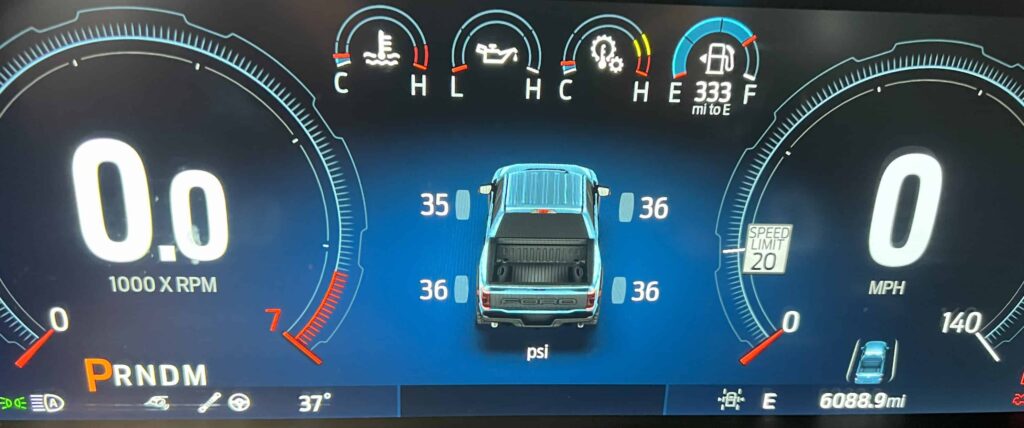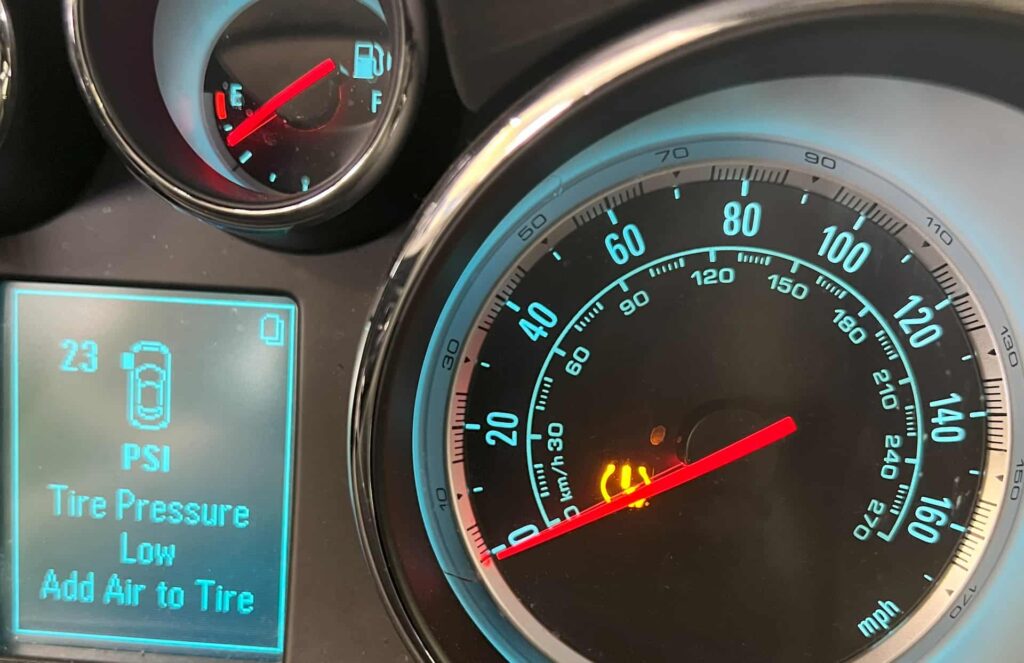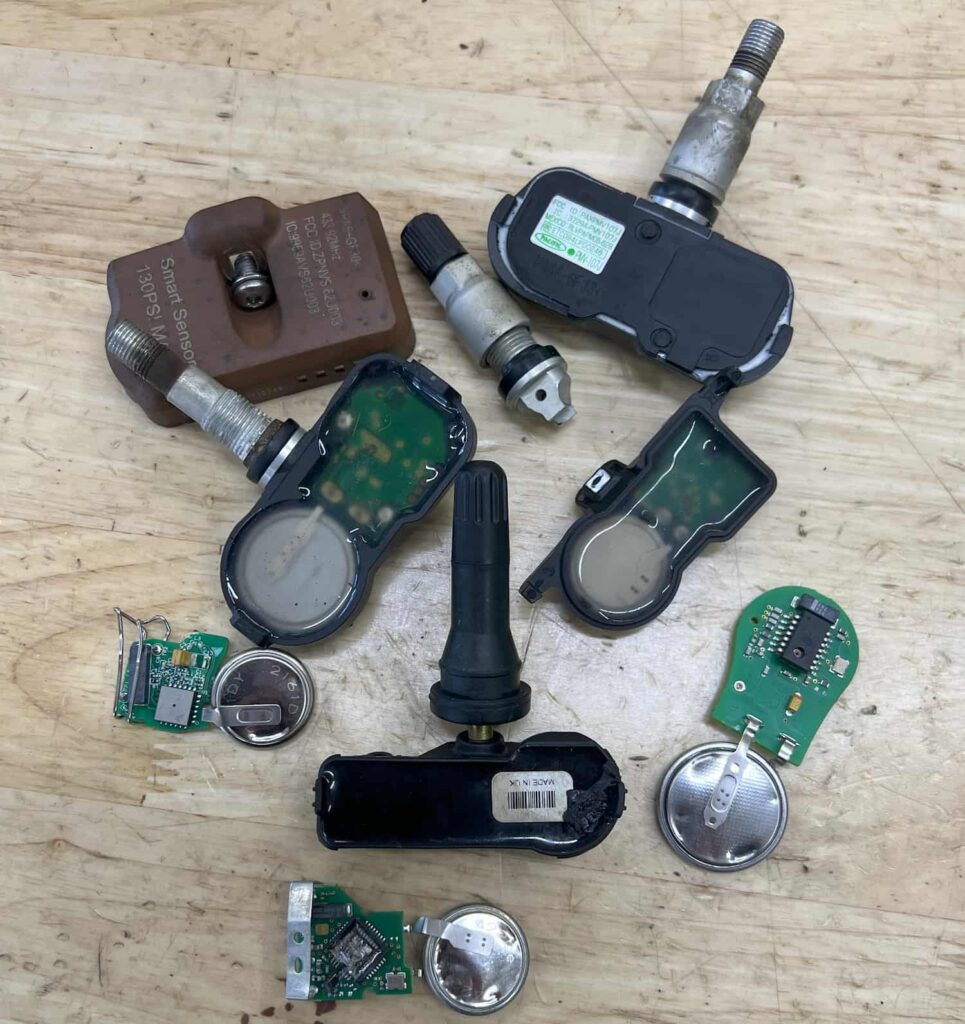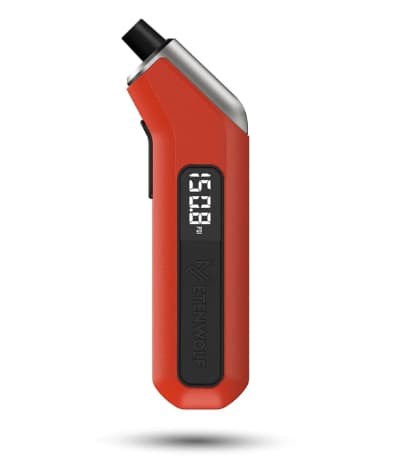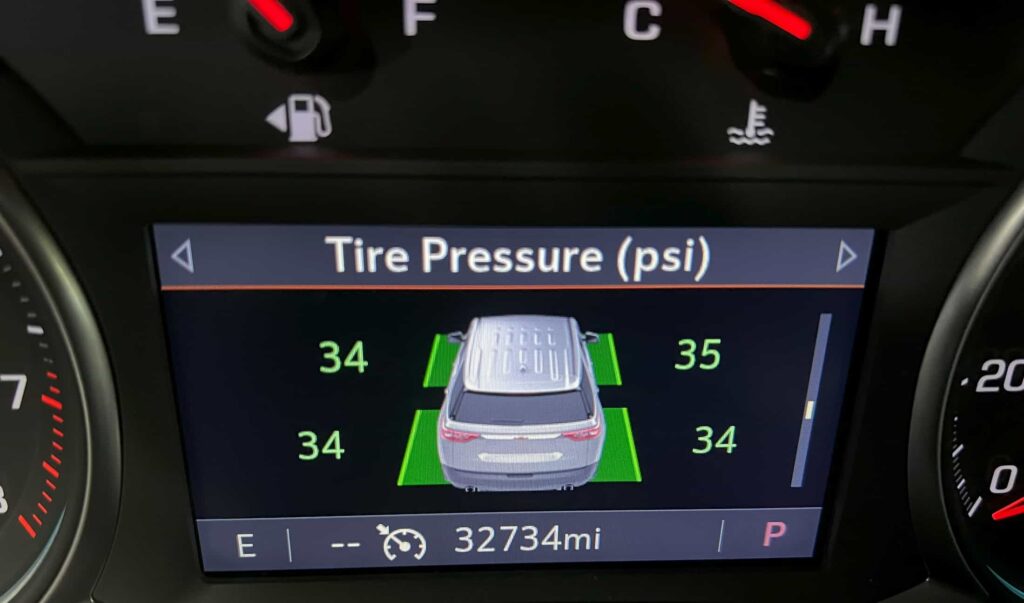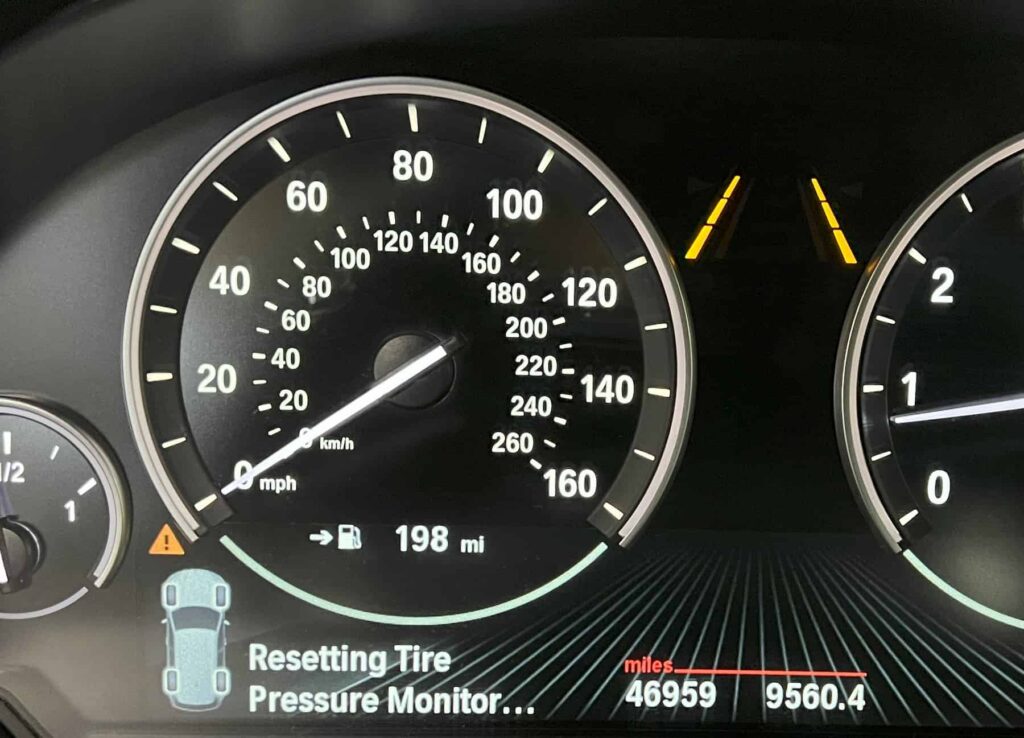Your vehicle’s Tire Pressure Monitoring System (TPMS) serves as a protector of your tires, offering real-time insights into their health and alerting you to potential issues before they escalate into serious problems.
Why Does My Car Need a Low Tire Pressure Monitoring System?
I personally know how frustrating it is when your tire pressure light stays on, but the importance of maintaining correct tire pressures cannot be overstated. Properly inflated tires are essential for safe handling, optimal fuel efficiency, and maximizing the lifespan of your tires.
Think about it this way, tire pressure monitoring systems are your first line of defense against the perils of underinflation, which can lead to decreased control over the vehicle, increased wear and tear on tires, and even catastrophic tire failures.
What Does a TPMS Warning Light Mean?
When the TPMS warning light illuminates on your dashboard, it’s signaling that one or more of your tires are significantly below the recommended air pressure. The low tire pressure warning light, often depicted on the dashboard as a yellow exclamation mark enclosed within a tire profile, serves as a prompt to take immediate action. Ignoring this warning can compromise your vehicle’s performance and more importantly, your safety.
How Does the Tire Pressure Monitoring System Work?
At its core, the TPMS monitors the air pressure in your tires, using either direct or indirect methods. Direct TPMS utilizes sensors inside each tire to measure pressure accurately and relay this information to the vehicle’s on board computer system.
Indirect TPMS, on the other hand, uses the vehicle’s wheel speed sensors to infer pressure changes based on the rotation speed of the tires. Regardless of the type, the goal remains the same: to alert you to potentially unsafe driving conditions.
Can Cold Weather Cause Your Tire Pressure Light to Go On?
Yes, cold weather can significantly affect air pressure. As temperatures drop, the air inside your tires contracts, leading to decreased pressure. This natural phenomenon can trigger your TPMS light, especially during sharp temperature declines. Regularly checking your tire pressure (when the tires are cold) and adjusting it according to the manufacturer’s recommendations can help mitigate this issue.
Why is My Tire Pressure Monitor Light On When My Tires are Fine?
Occasionally, the TPMS light may activate even if your tires appear to be adequately inflated. This could be due to a temporary fluctuation in pressure, a slow leak that’s not immediately apparent, or even a malfunction within the TPMS itself. Using a reliable tire gauge to manually check the pressure in all tires, including the spare, can help determine the cause.
The Tire Air Pressure Warning Light Came On. Now What Do I Do?
When the tire pressure warning light stays illuminated on your dashboard, it’s a clear sign that your vehicle’s tires may not be inflated correctly. This situation requires immediate attention for several reasons. Here’s what to do:
Check the Air Pressure in All the Tires: A low tire pressure light indicates that one or more tires are significantly below the correct tire air pressure recommended by your vehicle’s manufacturer. Use a digital tire pressure gauge to manually measure tire pressure in all 4 tires. Don’t forget to check the spare tire, as some systems (Toyota) monitor its pressure as well.
Add Air to Achieve Proper Tire Inflation: If any tires are underinflated, use an air compressor to add air until the proper air pressure is reached. This step might not turn off the tire pressure light immediately.
Manually Reset the TPMS (if necessary): In some vehicles, the TPMS light might need to be manually reset after addressing the air pressure issues. This is done by either following a TPMS reset procedure or by driving the vehicle a certain speed for a certain distance. Use our website’s search bar to search for your specific vehicle tire pressure monitoring system reset procedure.
TPMS Light Comes On and Goes Back Off
If you notice the TPMS light comes on and then goes back off, it could indicate fluctuating temperatures affecting the pressure in your tires. This phenomenon is common in areas experiencing cold weather, leading to a temporary decrease in air pressure. However, if the light fluctuates frequently under normal conditions, it might be wise to check for slow leaks or use a TPMS diagnostic tool to check the operation of each tire pressure sensor.
TPMS Light Flashes and Then Stays On
A flashing TPMS light followed by a steady illumination indicates a malfunction within the tire pressure monitoring system itself. This could be due to a faulty tire pressure sensor, issues with the system’s communication lines, or other malfunctions. In such cases, it’s essential to have the system checked by professionals to prevent any potential safety risks and ensure your TPMS light stays off once repaired.
Is It Ok to Drive With My Tire Pressure Monitor Light on the Dash?
Driving with the tire pressure monitor light on is not recommended. Low air pressure in your car tires can significantly affect the vehicle’s handling, increase tire wear, and possibly lead to a flat tire or blowout. If the light comes on, address the issue as soon as possible.
Do I Need to Replace My TPMS When I Get New Tires?
Replacing the TPMS is not necessary when you get new tires. However, the tire pressure sensors and their components should be inspected to ensure they are functioning correctly and not damaged. Regular maintenance including tire rotations and replacements should always include checks to make sure the TPMS system, including all tire pressure sensors, are working as intended.
Note: if you are not sure your local mechanic does this, just ask them to!
Does a TPMS Replace Regular Tire Pressure Checks?
Despite the convenience and safety provided by a tire pressure monitoring system, it does not replace the need for regular old tire pressure checks. A TPMS alerts you to significant pressure drops, but maintaining the correct pressure in your tires, checking for slow leaks, and ensuring your tires are properly inflated are all crucial steps every vehicle owner should take regularly.
FAQ
How often should I manually check my tire pressure?
It’s recommended to check your tire pressure at least once a month and before long trips. Fluctuating temperatures can affect tire pressure, so more frequent checks might be necessary in regions with significant temperature changes.
Can I reset the TPMS light by myself?
Yes, in many vehicles you can manually reset the TPMS light after addressing any tire pressure issues. The process varies by vehicle, so consult our website for specific instructions.
What is the recommended tire pressure for my vehicle?
The recommended tire pressure for your vehicle is found on a sticker inside the driver’s side door panel or on the gas tank door. It’s crucial to set your tire pressures to the exact levels the vehicle recommends.
How do I know if my TPMS sensor is faulty?
If the TPMS light flashes upon starting the car and then stays on, it may indicate a malfunction with the system or its sensors. Consistent issues despite correct tire pressure or intermittent light behavior also suggest sensor issues.
What causes a TPMS sensor to fail?
TPMS sensor failure can be caused by battery depletion (sensors have a finite lifespan, typically 5-10 years), damage from accidents or tire changes, or corrosion.
